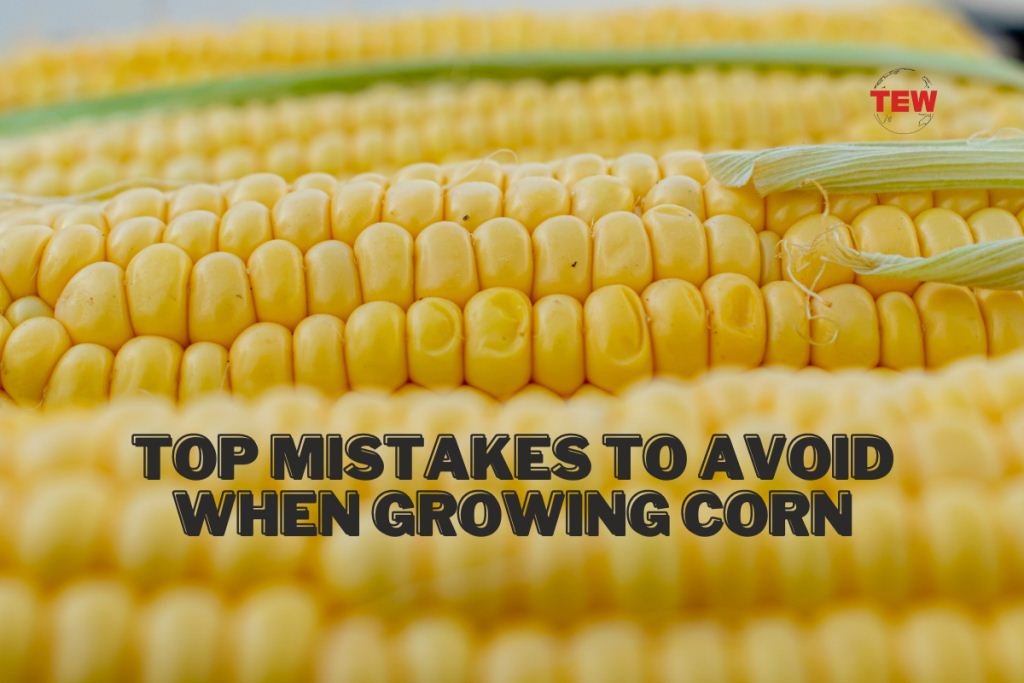Of course, growing corn isn’t that complicated. However, simple mistakes can cost you dearly. In particular, making the following mistakes can interfere with your corn yields.
On those lines, here are the top mistakes to avoid when growing corn.
Introduction
If you have decided to plant corn, do it like a pro. Aim at getting the right yields. Don’t go for the bare minimum. Aim at hitting the top. Use the right amount of fertilizer. Use a corn yield per acre calculator to estimate your yields. Don’t make common mistakes.
1. Don’t Plant in Wet Soil
Avoid planting your corn on wet soil. If the soil is too wet, your seeds might not sprout. Plus, excessive soil dampness can negatively affect your plant’s root systems. So, if you want to optimize your corn yield, avoid planting on wet soils. Instead, wait until the soil has dried out. If you plant before the ground dries, the corn seeds might not germinate.
2. Don’t Fail to Fertilize
Always apply fertilizer. Remember, all crops need food. Thus, make sure that your soil is amended before planting. You may also want to consider applying a suitable fertilizer during the growing corn process. You’ll get more yields if you supply your corn with the right nutrients at appropriate times. Corn should be fertilized three times; when they’re about four inches tall; when they’re ten inches tall; as well as, when their ears start forming silks.
3. Planting Depth
Plant your corn at recommended depth. Thus, don’t plant them too shallow. Also, planting them too deep isn’t recommended. They will sprout slowly. Remember, planting your corn too deep will make the seed fail to germinate quickly. Thus, understand the right depth to plant your corn. Plant corn at around one inch deep. However, if experts recommend that you plant them deeper, do so. At most, dig 3 inches deep.
4. Not Paying Attention to Pests, Diseases
Growing corn can be affected by a variety of pests and diseases. Not paying close attention to these pests and diseases can negatively impact your corn yields. Thus, if you see your corn deformed or unappetizing, move fast and work on the pests and diseases affecting your corn. So, don’t allow your corn harvest to be affected by pests or disease. Spray the right chemicals and get rid of corn. Things like fungal as well as the bacterial disease can negatively impact the yields of your corn. Conduct your research before applying any pests. You can also visit experts for recommendations. Use the right pest control option.
5. Grow Space
Taller crops like corn require enough space to growing corn. Thus, failing to factor in the corn size is a mistake. Prepare the space well before planting your corn. Ensuring that space is enough to accommodate growing corn is an extremely important factor to consider.
Work on the soil. Amend the soil where necessary. Apply the right amount of fertilizer before planting your corn. Make sure that your soil is light enough to allow for seed germination. Make the soil rich and fluffy. Doing so will promote prompt seed germination.
6. Design
If you have a large farm, choosing long rows can work. This is because the area can support long rows. However, this doesn’t apply to a smaller garden. You have to use a specific design when plating your corn. Thus, not using the right planting design is a huge mistake you should avoid when planting your corn. Remember, poor design can lead to corn pollination mistakes. Thus, consider using a box-based shape when planting your corn. Avoid panting your corn in long rows.
7. Not Thinning the Plants
Of course, all the seeds may germinate. But the problem arises when they start growing corn. This is the time they will compete for nutrients, water, sunlight, etc. This struggle will see your corn yellow in color. Thinning also eliminates sprouts, allowing your corn enough growing corn space. Thus, if you want to boost the yields of your corn, thin them.
8. Wrong Harvesting Time
Planting or harvesting any crop, including corn, is all about getting the timing right. There is a specific season for planting and harvesting your corn. In particular, corn should be harvested at the right time.
Thus, it’s important to know when to pick corn. Getting the timing wrong may see you getting low yields. There are several stages that corn must pass through before being harvested. Understand these stages. In particular, be observant to see when the silk is dry. This is the time corn is ripe for harvest.
9. Too Much or Insufficient Water
Water is an important aspect of any pant growth. Corn requires a lot of water to help them form strung roots. Thus, don’t limit the water to corn. It won’t encourage them to growing corn. Water them deeply. Water them on a daily basis. Also, water them for longer periods of time. Water should reach the roots for growth to happen. Remember, the stronger the roots, the healthier the plant, and the more yields you get.
Key Takeaway
Growing corn isn’t a joke. It takes a lot of time, resources, and manpower. From soil preparation, seed planting, to harvesting, there is a lot to be done before getting your corn. There are many latest agriculture trends to follow. Also, there are things you can do to improve your yields. At the same time, simple mistakes can bring corn yield down. Avoiding these mistakes is all you need to get the right harvest. From not watering your planting in the correct manner to not dealing with pests and diseases, making simple mistakes can negatively impact your corn yield. Avoid making these mistakes if you want the right corn yield.
The Bottom-Line
Growing corn doesn’t just stop at planting the seeds and waiting for harvest. It goes beyond these two steps. You must prepare the soil, plant the right seed, water them properly, and harvest your corn at the right time. Still more, if you want the best corn yields, avoid making the above mistakes. These mistakes can interfere with your corn yields.





